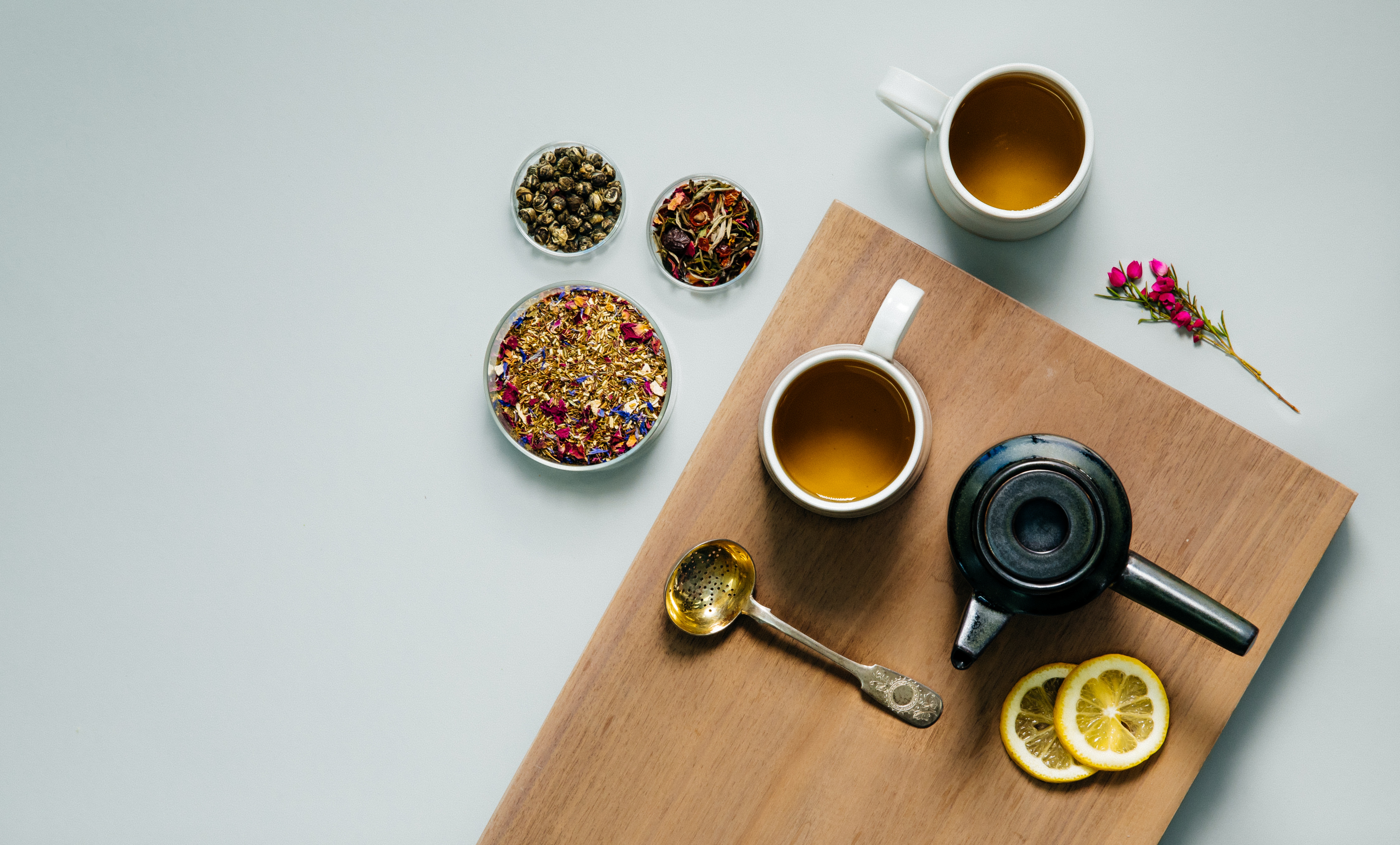Of the thousands of teas in existence, there’s nothing quite like matcha green tea — that smooth, delicious flavor, the rich texture, and all those wonderful health benefits.
But before you take another sip of that delightful tea, take a minute to learn more about this unique beverage that once was only shared by the highest nobility in Japan. We’ll break down EVERYTHING about matcha green tea — its history, the culture, its health properties, and how to make it — so you can enhance your enjoyment and get the most benefit each sip.
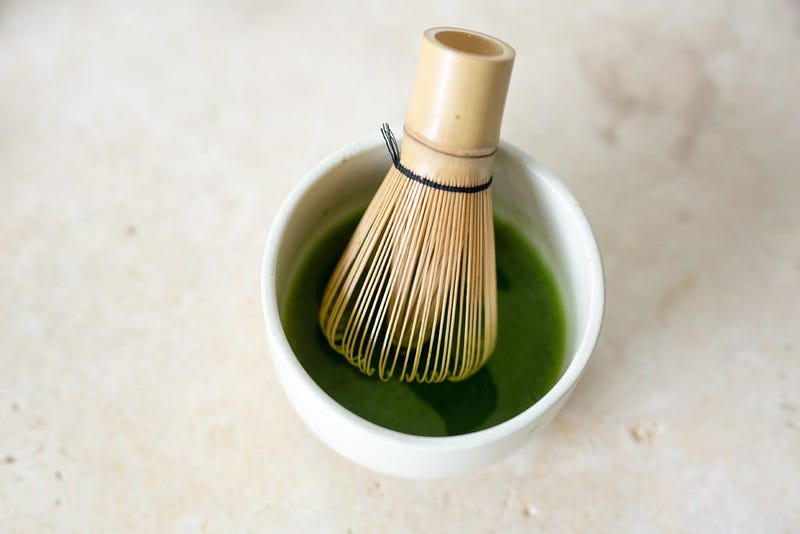
After this article, you’ll never look at it the same way again!
Matcha Green Tea: History
There’s nothing like enjoying that traditional Japanese matcha green tea…
…or is it really Japanese?
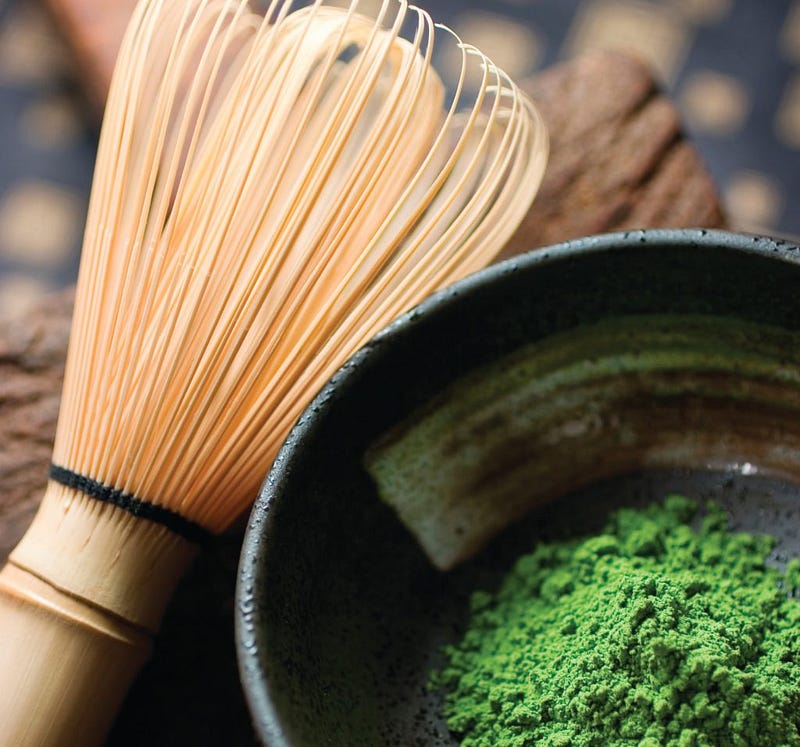
The origins of this unique tea can actually be traced back to China during the Song Dynasty (960–1279). During this time, Zen Buddhists started making a powdered tea from a shade-grown green tea called "Gyokuro." After steaming and drying the tea, they plucked the leaves — called “tencha” — and grounded it into a powder called “matcha” (抹茶).
It was in 1191 when a Zen monk named Eisai went to Japan and introduced matcha. Although this powdered tea slowly lost its popularity in China, the Japanese embraced it and made it an important part of rituals in Zen monasteries. Also, as they consumed more, the Japanese continued to perfect the process of creating the best matcha.
For many years, however, only the shogun and nobility were able to drink matcha because it was produced in such small quantities. Then, in 1738, Sohen Nagatani invented the Uji method to make matcha green tea, a far more efficient process which is the standard that is still used today.
Matcha Green Tea: Traditions and Culture
With such a long and rich history, matcha green tea also boasts a remarkable culture and tradition.
It seems that even early Zen Buddhists who first created matcha could sense the benefits of the tea — they believed that drinking it brought them more clarity, mental focus, and calmness and it became an integral part of their meditation. (And for more science-y reasons which we’ll discuss later, matcha has properties that have been associated with raising energy levels while keeping you relaxed and stress-free.)
The Samurai warriors also understood the power of the tea and it’s believed that they would drink matcha before fighting a battle for more energy and focus.
Making the tea is an entirely different story. Traditionally, it is performed and presented in a tea ceremony called chanoyu (茶の湯). (The performance looks simple, but it can take almost TEN YEARS for a master to learn all the steps perfectly.) Every movement of the ceremony is planned and choreographed with a strong emphasis on spirituality, serenity, and silence — it’s about complete focus in the present and being immersed in every single motion.
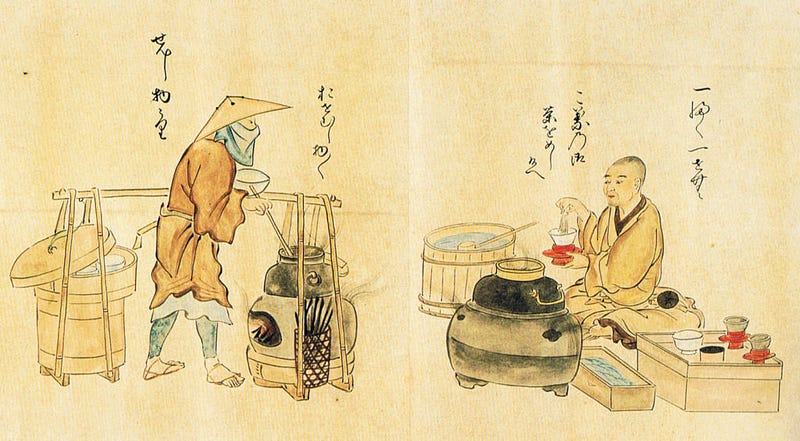
Ultimately, the traditional Japanese tea ceremony reflects the principles of harmony (和), respect (敬), purity (清), and tranquility (寂). And with such a flavorful taste and luxurious texture, the matcha green tea powder deepens the meditative and calming aspects of the ritual.
Well, what about for you?
In our fast-paced modern world, having your own tea ceremony with an invigorating cup of matcha green tea could be the perfect way to step out from the craziness of the world to enjoy some “me time” and relaxation.
The equipment you’ll need for your own tea ceremony are:
Tea bowl (茶碗, chawan)
Tea whisk (茶筅, chasen)
Tea spoon (茶杓, chashaku)
Tea cloth (茶巾, chakin)
Tea caddy (棗, natsume)
Later, we’ll show the EXACT steps to make the perfect cup each and every time.
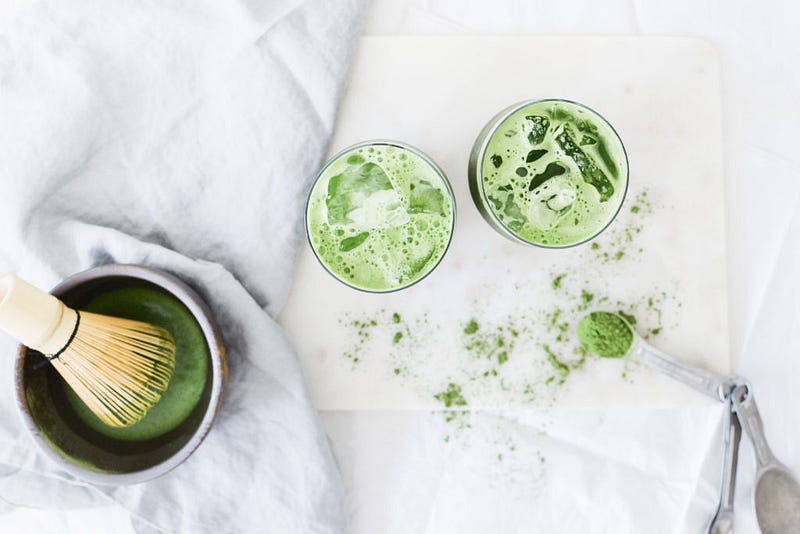
Matcha Green Tea: How Is it ACTUALLY Made?
Let’s take a look at the harvesting process of that phenomenal tasting matcha green tea.
First, the Sencha green tea leaves are grown in the shade for 20 days. By doing this, it slows the growth of the leaves as they become darker, increase their chlorophyll content (because of its darkness), and produces amino acids. What’s the result of combining of these natural effects?
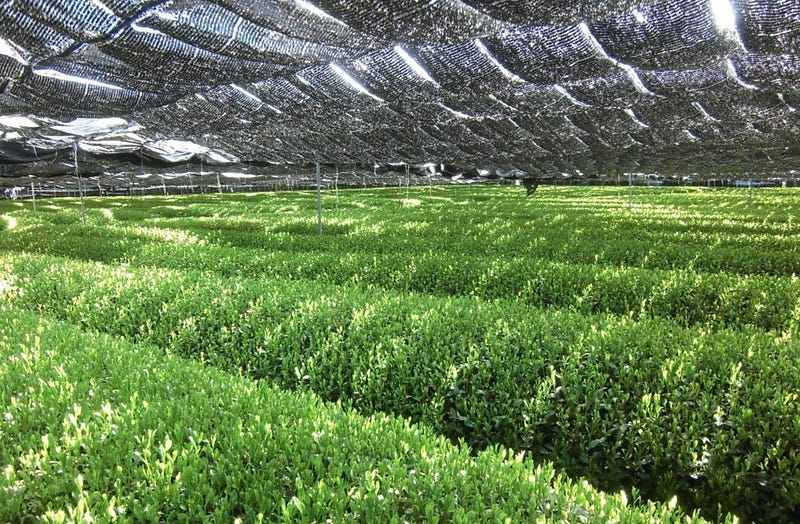
They help produce and enhance matcha green tea’s incredible health benefits.
From there, only the finest tea buds are hand-picked and steamed, a Japanese method of processing the leaves. The leaves alone are called tencha, which get put into a rotating drum filled with ceramic-covered magnets — the magnets rapidly bounce within the rotating drum while hitting each other, which slowly and finely grounds the tencha leaves in a way that maintains the leave’s vibrancy.
Finally, we get culinary Matcha green tea, which we call Grade A Matcha.
Here’s a video of Art of Tea’s CEO, Steve Schwartz’s, journey to Japan to learn about this unique process and the care and meticulousness that goes into it:
Matcha Green Tea: Health Benefits
One of the reasons why matcha green tea is popular is for its wide range of purported health benefits. From teeth to weight loss, it seems like matcha green tea has been associated with things that can do something for everyone.
Much of this reason is because matcha green tea is basically whole leaves grounded into a fine powder, resulting in even higher levels of polyphenols, flavonoids, catechins and amino acids than regular green tea.
Grab a cup, sit back, and enjoy this HUGE list of many of the great things matcha green tea has been associated with:
1. Matcha green tea might have the potential to fight and prevent cancer.
Green tea contains powerful antioxidants called catechins — the most powerful catechin found in green tea is EGCG (epigallocatechin gallate), which could have many potential benefits.
In a 2012 study from the University of Chicago, researchers found that the EGCG in green tea could have anticancer benefits.
A review in the 2014 World Journal of Clinical Oncology suggested that green tea extract could potentially help with breast cancer. Canadian scientists also found similar benefits against breast cancer from their own meta-analysis.
Scientists from LSU found that a brief treatment with EGCG could significantly reduce serum markers such as PSA, VGF and VEGF that predict the progression of prostate cancer.
In 2012, Taiwanese researchers even found that drinking at least one cup of green tea per day was associated with a decreased risk of lung cancer in smokers.
Oh, and if you buy your tea at Starbucks, you might want to read this: Researchers from the University of Colorado found that the concentration of EGCG available from drinking matcha “is 137 times greater than the amount of EGCG available from China Green Tips green tea” (which is the green tea sold at Starbucks). Make sure you get quality grade tea!
Researchers from the United Kingdom even found that the EGCG in green tea may potentially have an anti-HIV effect.
2. Matcha tea could reduce the risk heart disease.
Spanish researchers reviewed a variety of studies and associated green tea and its flavonoid, catechin, with a decrease cholesterol absorption and plasma levels, a reduction in platelet aggregation, and lower blood pressure.
Research from the Harvard Medical School issued findings that the antioxidants in green tea can possibly help block the oxidation of LDL (bad) cholesterol while increasing HDL (good) cholesterol and improving artery function.
And in a prospective, 6-year study of 14,001 Japanese elderly people in the Annals of Epidemiology, researchers found that green tea consumption was associated with a significantly reduced mortality from cardiovascular disease.
3. Matcha may help you lose weight.
Research in the American Journal of Clinical Nutrition found that a green tea extract significantly increased the energy expenditure (the body’s ability to burn calories) and fat oxidation in humans. German researchers also found that the EGCG in green tea increased fat oxidation and helped to lower body fat and BMI.
A 12-week study also found that a group that took green tea extract (which is high in catechins) lost significantly more weight, fat mass, and waist circumference than a control group that drank a tea low in catechins.
4. Green tea could promote healthy teeth and gums.
A 2009 study by the American Academy of Periodontology suggests that green tea’s antioxidant, catechin, could reduce periodontal disease and improve oral health.
5. Want a mental boost?
Matcha is rich in L-Theanine, an amino acid that may be associated with relaxation and alertness in brain function. Dutch researchers, for example, suggested that the L-Theanine in green tea increases alpha activity in the brain, which could enhance mental alertness and attention. As an extra benefit, L-Theanine could improve memory and learning as a cognitive enhancing agent — it might be exactly what you need the next time you’re studying or remembering something important!
A study in 2011 suggested that the EGCG in green tea (as well as other flavonoids) could play a role in reducing a certain aspect of Alzheimer’s disease.
6. Matcha can also help you fight stress!
In 2007, Japanese researchers found that the L-Theanine in green tea leaves was associated with a reduction in physiological and psychological stress responses in the sympathetic nervous system. In 1999, researchers also showed that the same amino acid in green tea may significantly relax the mind without inducing drowsiness.
7. If you have arthritis, matcha could potentially help.
A study from the University of Toledo in 2013 suggested that the ECGC in matcha green tea could help against the inflammation from rheumatoid arthritis.
8. Matcha might boost your exercise and fitness too.
In a ten-week study, Japanese researchers found that supplementing with green tea extract boosted exercise endurance by 8% — 24% by increasing the body’s use of fat as an energy source.
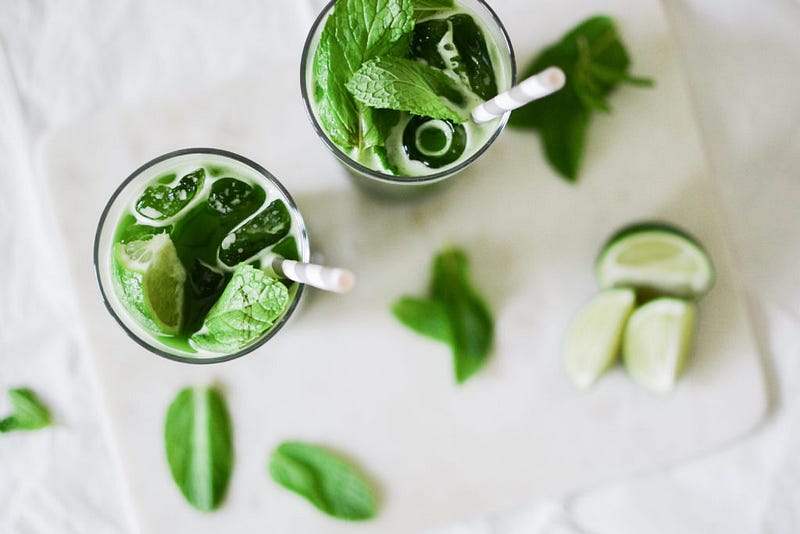
Now, we’re not saying that matcha green tea is a miracle drink that will cure everything — not at all! But we want to share the research publicly available on the benefits associated from elements within matcha green tea so you can get the education you deserve.Interesting stuff!
Many of these studies, however, caution that more research is needed to make a strong conclusion so who knows what the next few years of science could discover!
Matcha Green Tea: How To Perfectly Prepare It Every Time
Now it’s time to fall in love with your matcha!
The best way to enjoy and unleash the sensational flavor and texture and the health benefits from your matcha green tea is to prepare your drink correctly.
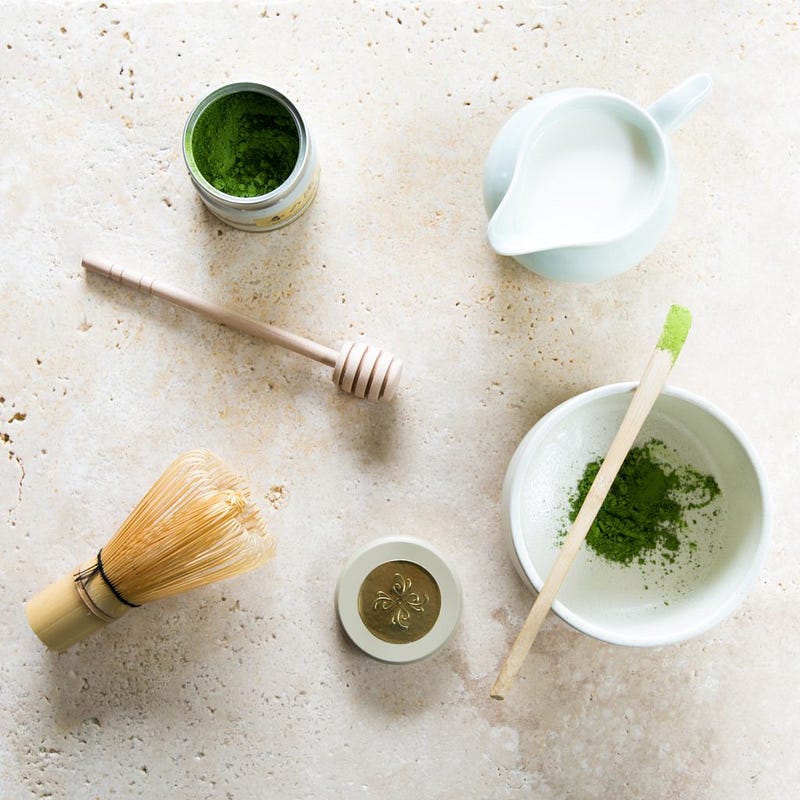
Sure, tons of tea drinkers can get by making their favorite beverage with a spoon and a normal cup… but believe us, once you try it the traditional way, you’ll never look back!
Your tea will go from stimulating just one sense (your taste buds) to stimulating all of them. For traditional matcha preparation, follow these steps using a matcha bowl, whisk, and scoop:
- Preheat the tea bowl with boiling water to awaken the cells, aromas and flavors currently in the bowl and moisten the tea whisk.
- Pour out the water and dry the bowl with a clean cloth or chakin.
- Scoop 2 grams (1/4 teaspoon per 6–8oz of water) of matcha green tea and add approximately one teacup of hot water.
- Hold the bowl firmly with one hand and whisk from left to right to form frothy bubbles. Whisk the Matcha well and break up any small lumps with the tip of your whisk. This assures the most optimal flavor and a smooth and creamy texture.
- Hold the whisk in the middle of your foam, and allow the liquid inside the whisk to draw off, then gently remove.
And that’s it! You’ll have a delicious cup of matcha ready to enjoy and a wonderful, relaxing ritual to give you some peace of mind (and a yummy health boost) in your day!
Matcha Green Tea at Art of Tea
Ready to make your own amazing cup of matcha green tea or host your own tea ceremony with friends and family?
Start with the highest quality matcha green tea like our Grade A matcha or ceremonial grade matcha tea. Our matcha green teas are certified organic with leaves hand-picked from the highest quality farms in the world.
That’s why, once you open the jar, you are serenaded with the tea’s lovely and calming aroma. As you begin to whisk it into your bowl, the powder easily whips up into the phenomenal texture and creaminess you know and love.
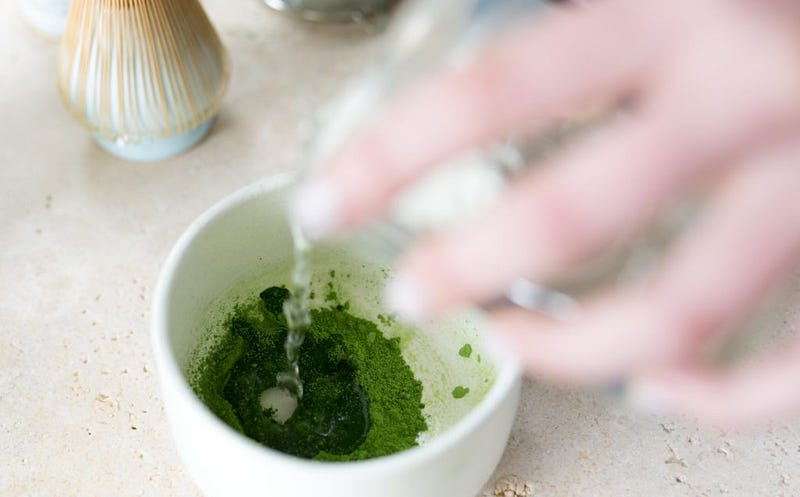
Feel a wave of calm flow through your body as you take that first sip. And enjoy that bright, clean, and uplifting flavor with just a hint of that natural sweetness, which only comes from a high-quality matcha.
P.S. We made it super easy for you to have the BEST matcha green tea experience by putting together all the essentials in a complete kit! Click HERE to take a peek.
Art of Tea is an award winning purveyor of specialty and organic teas, based in Los Angeles, CA.
If you found this article helpful, please share it with coworkers, colleagues, and fellow lovers of tea.
Originally published at blog.artoftea.com on June 17, 2016.

